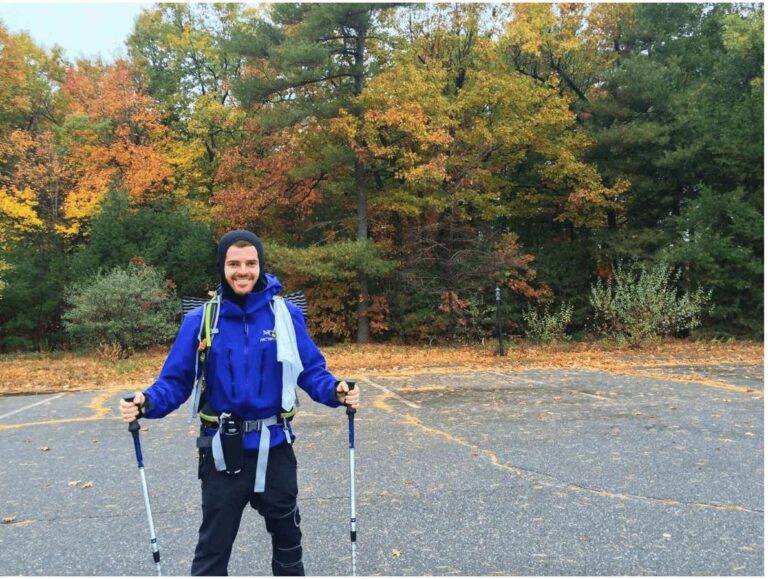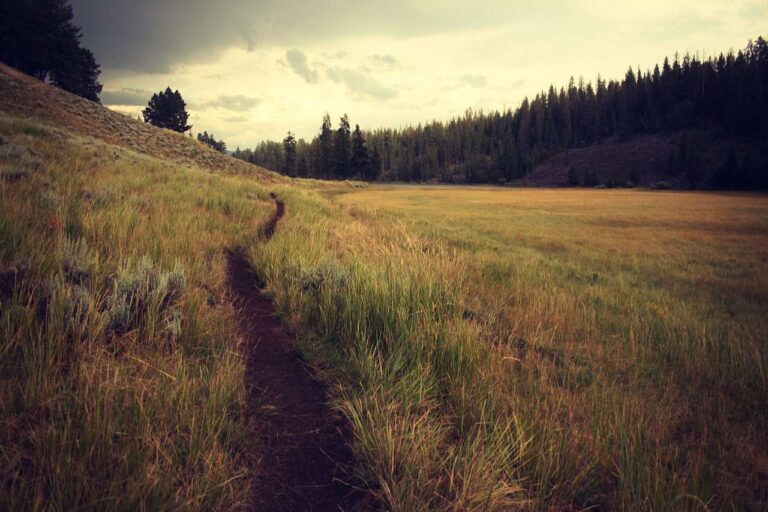If humans need one thing to walk in the woods, it's foot protection. Hiking boots have been the best way to do that since any of us can remember, and today there are more options than you can fathom.
Below is a comprehensive list of the best hiking boots for backpacking and hiking. These cover lightweight hiking boots that excel on easy trails and around town, midweight hiking boots that can do just about anything, and heavyweight hiking boots that are built to trudge through the gnarliest terrain on this planet.
Table of Contents
Comparison Table of Hiking Boots
Use this quick comparison table to see the top specs and links to men's and women's models at a glance.
| Best Hiking Boots | Weight | Warranty | Check Price |
|---|---|---|---|
| La Sportiva Nucleo High II GTX | 16.8 oz | Limited Lifetime | Men's, Women's |
| Salomon X Ultra 4 Mid GTX | 16.8 oz | 1 Year | Men's, Women's |
| HOKA Kaha 2 GTX | 18.8 oz | 1 Year | Men's, Women's |
| Keen Targhee II Mid | 17.4 oz | 1 Year | Men's, Women's |
| Teva Grandview GTX Mid | 17 oz | 1 Year | Men's, Women's |
| Adidas Terrex Swift R3 Mid GTX | 16 oz | 1 Year | Men's |
| Altra Lone Peak ALL-WTHR Mid 2 | 15 oz | 1 Year | Men's, Women's |
| Columbia Newton Ridge Plus II | 16 oz | 1 Year | Men's, Women's |
| Salomon Quest 4D 4 GTX | 23.2 oz | 1 Year | Men's, Women's |
| Oboz Sawtooth Mid Waterproof | 20.3 oz | 1 Year | Men's, Women's |
| Lowa Renegade GTX Mid | 19.5 oz | 1 Year | Men's, Women's |
| Merrell Moab 3 Mid Waterproof Hi | 18 oz | 1 Year | Men's, Women's |
| Danner Mountain 600 | 18.5 oz | 1 Year | Men's, Women's |
| Timberland White Ledge Boot | 18 oz | 1 Year | Men's, Women's |
| Vasque St. Elias GTX | 23.5 oz | 1 Year | Men's, Women's |
| Asolo Fugitive GTX | 24 oz | 2 Years | Men's |
| Zamberlan Vioz GTX | 25 oz | 1 Year | Men's, Women's |
The Best Lightweight Hiking Boots
La Sportiva Nucleo High II GTX
Best for backpacking in wet, rugged terrain
Key Benefits
- Weight: 16.8 oz per shoe (Men's)
- Reliable waterproofing: Gore-Tex Surround tech keeps feet dry, even in puddle-soaked trails or rain-heavy days
- Better breathability: Side-venting panels allow moisture to escape more efficiently than traditional GTX liners
- Improved downhill control: Vibram sole with La Sportiva’s Impact Brake System helps reduce foot slippage on steep descents
- Solid support without bulk: Feels stable on uneven terrain, yet doesn’t feel overbuilt or overly stiff
The La Sportiva Nucleo High II GTX is a lightweight, all-weather hiking boot that punches above its weight when it comes to waterproofing and support. Built with a Nubuck leather upper and Gore-Tex Surround, it strikes a solid balance between breathability and full-weather protection.
Compared to bulkier backpacking boots, this one leans lighter and more flexible without giving up key trail-ready features like a stiff heel, grippy outsole, and solid ankle support.
Not ideal for high-heat or tropical hikes, but it shines in variable alpine conditions and wet shoulder seasons.
Pros
- Lightweight for a leather boot, making it a good pick for long days with elevation gain
- Excellent traction across mixed terrain: wet rock, loose gravel, packed trails
- Roomy forefoot (for La Sportiva), which helps reduce hot spots over long miles
Cons
- Runs warm, especially in summer or humid climates
- Some break-in required, particularly around the heel collar
- Not ideal for ultralight backpackers or those wanting a trail-runner feel
Salomon X Ultra 4 Mid GTX
Best for fast and light hiking
Key Benefits
- Weight: 1 lb. 13 oz. (men’s size 9)
- Secure, foot-hugging fit thanks to Salomon’s SensiFit and Active Support design
- Excellent grip on wet, muddy, or uneven ground
- Responsive and agile feel, even with a loaded daypack
- GORE-TEX protection keeps feet dry during stream crossings and rain
The Salomon X Ultra 4 Mid GTX blends trail-runner agility with the structure and protection of a mid-height hiking boot. Built with a waterproof GORE-TEX membrane and Salomon’s Advanced Chassis, it keeps your feet dry and stable without weighing you down.
Compared to traditional boots, this model feels lighter and more nimble, especially on technical trails and fast-paced hikes. The higher ankle collar adds support without feeling restrictive, and the All Terrain Contagrip outsole holds steady on wet rock and loose gravel.
This boot is a favorite for day hikers and fast-packers who want running shoe comfort with just enough extra support for rougher trails.
Pros
- Combines running shoe comfort with boot-like support
- Great choice for moving quickly over variable terrain
- Requires little to no break-in for most hikers
Cons
- Not as cushioned or padded as burlier boots on long-haul treks
- Narrow fit, especially around the midfoot (may not suit wide feet)
- Some durability concerns with the mesh upper if used on very rocky trails
HOKA Kaha 2 GTX
- Weight: 18.8 oz. per shoe (Men's)
- Cost: $240
The HOKA Kaha 2 GTX hiking boots combine durability and comfort with their remarkable weight-to-cushion ratio. Crafted with waterproof nubuck leather from an LWG gold-rated tannery, they ensure plush adventures. Featuring GORE-TEX fabric with recycled textiles for breathability and waterproofing, along with Vibram Megagrip rubber for enhanced ground contact, these boots are ready for any terrain.
They're equipped with PFC-free water repellency treatment, recycled mesh, and polyester laces, quick-lace metal top hooks, abrasion-resistant toe caps, anatomic Achilles construction, and molded polyurethane sockliners with 50% soybean oil. The late-stage Meta-Rocker with flex grooves enhances the walking experience.
Keen Targhee II Mid
- Weight: 17.4 oz per shoe (Men's)
- Cost: $135
The Keen Targhee II Mid is a classic waterproof boot that has been around for years. It features Nubuck leather uppers with a bit of nylon mesh for breathability and has a rugged shape and build. The ankle protection is serious despite its lightweight package.
Keen has its own waterproofing and sole on this shoe, and both hold up well. Keen also recently introduce the Targhee III, a slightly lighter, slimmer version of this shoe. While we recommend the classic, those who want something similar but slightly different may look here. The Targhee III Mid is available for men and women.
Teva Grandview GTX Mid
- Weight: 17 oz per shoe (Men's)
- Cost: $175
Tackle diverse trails with the Teva Grandview GTX Mid hiking shoes. These rugged companions blend waterproof protection and quick-drying comfort for any adventure. Featuring waterproof leather uppers and a durable water-repellent (DWR) finish, they keep your feet dry and shielded.
With GORE-TEX waterproof/breathable booties, wider toe boxes, responsive polyurethane footbeds, micro waffle-knit linings, an adjustable Universal Heel Lock System, EVA midsoles, nylon ESS shanks, and Vibram Megagrip rubber outsoles, these shoes ensure stability and support on various terrains.
Adidas Terrex Swift R3 Mid GTX
- Weight: 16 oz per shoe (Men's)
- Cost: $180
The Adidas Terrex Swift R3 Mid GORE-TEX hiking boots seamlessly merge the lightweight comfort of trail-running shoes with the stability of traditional boots, ensuring swift performance in any weather. Engineered with mesh and synthetic uppers for lightweight comfort, they feature GORE-TEX Performance Comfort waterproof/breathable linings to keep your feet dry.
Anatomically molded heels with external support clips offer stability, while Lightstrike EVA midsoles provide cushioning and flexibility. With Continental rubber outsoles for traction in both wet and dry conditions, these boots are versatile companions on the trail.
Altra Lone Peak ALL-WTHR Mid 2
- Weight: 15 oz per shoe (Men's)
- Cost: $180
Conquer challenging trails or stroll around the block with confidence in the Altra ALL-WTHR Mid 2 hiking boots. Featuring waterproof construction and enhanced TPU kick plates, they're primed for any adventure. Keep feet dry with their waterproof design.
Enjoy a responsive yet plush ride with Altra EGO midsoles. Balanced cushioning ensures low-impact landings, while FootShape toe boxes promote natural toe splay. Additional features include 5mm cushioned footbeds, MaxTrac outsoles, StoneGuard for underfoot protection, and a 25mm stack height.
Columbia Newton Ridge Plus II
- Weight: 16 oz per shoe (Men's)
- Cost: $80
The Columbia Newton Ridge Plus II hiking boot (and the regular Plus for women) is a standout budget boot for hikers. It's a leather boot with ankle support and decent build quality and requires little break-in time. However, the boot isn't durable or comfy enough for 10+ miles of hiking, so those wanting a serious trekking boot should look elsewhere. There are some durability issues as well for heavier use, so best used around town and on local trails. The design and look is solid, and they are great for casual and work use as well.
The Best Midweight Hiking Boots
Salomon Quest 4D 4 GTX
- Weight: 23.2 oz per shoe (Men's)
- Cost: $230
Engineered for endurance and rugged terrain, Salomon Quest 4 GORE-TEX hiking boots ensure grip, support, and agile movement for seamless strides. GORE-TEX waterproof/breathable membranes keep feet dry in wet conditions. Drawing inspiration from trail-running shoes, these boots flex naturally with your feet for a smooth journey.
Enhanced with the updated ADV-C 4D chassis, they safeguard ankle articulations, offering stability and heel support to reduce fatigue under heavy loads. Contagrip TD rubber outsoles with deep, aggressive lugs ensure durability and superior traction on varied terrain.
Oboz Sawtooth Mid Waterproof
- Weight: 20.3 oz per shoe (Men's)
- Cost: $150
Oboz is on the rise in rugged footwear, and the Sawtooth Mid Waterproof boot is one of their most popular models. The Sawtooth has a leather upper that is durable and covered in Oboz's BDry waterproof technology, which works well.
The boot uses Oboz's Sawtooth pattern for the outsole, which has great tread, is self-cleaning, and extends up the sides of the boot for maximum durability and grippage while scrambling. Oboz includes a custom, high-quality insert in all shoes to increase comfort, which allows you to wear them out of the box.
In short, they don't skimp on anything. They are a little on the heavy side for a lower-profile boot (the ankle coverage is not huge), and can be too warm in hot climates due to mediocre breathability. On the plus side, Oboz also plants a tree for every purchase!
Lowa Renegade GTX Mid
- Weight: 19.5 oz per shoe (Men's)
- Cost: $230
The Lowa Renegade GTX Mid hiking boot is a classic from a major brand and a boot that has been popular for years. It has a Nubuck leather upper and solid waterproofing with a Gore-Tex liner that covers the ankle. There are plenty of sizing and color options, so you can probably find the right shoe to fit you.
The boot is on the light end for midweight boots, but is not exactly “light” when it comes to footwear. It wears pretty well out of the box and is quite comfortable, but despite this, durability can be an issue. The shoe has many seams, which start to split after extended use. Be sure to test them initially to see if they need warranty repair.
Merrell Moab 3 Mid Waterproof Hi
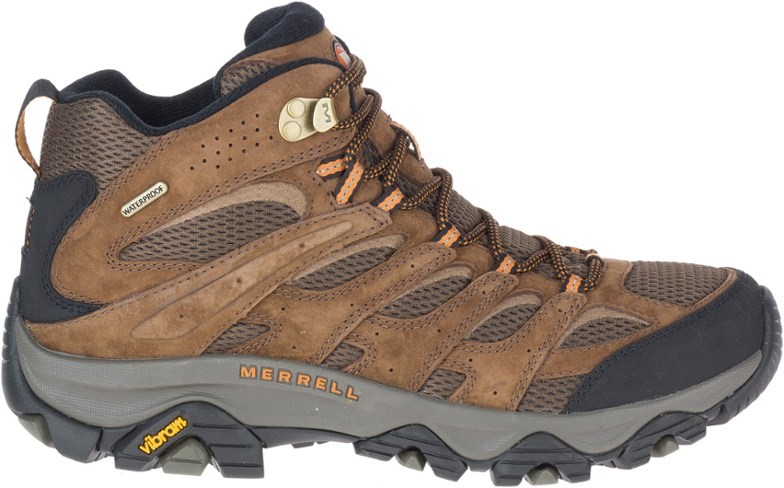
- Weight: 18 oz. per shoe (men's)
- Cost: $150
Experience the enhanced Merrell Moab 3 Mid waterproof hiking boots, dubbed the “Mother Of All Boots.” Renowned for their comfort and versatility, this latest version offers even greater softness, grip, and support.
Upgraded from the Moab 2 series, these boots feature partially recycled fabrics, improved insoles, cushioned midsoles, and Vibram outsoles for enhanced traction. With pigskin leather and mesh uppers, waterproof membranes, breathable linings, contoured insoles, shock-absorbing technology, and durable outsoles, these boots are your ultimate companion on any terrain.
Danner Mountain 600
- Weight: 18.5 oz per shoe (Men's)
- Cost: $180
The Danner Mountain 600 is a hiking boot that falls between casual, workwear, and a trail shoe. Danner is known for work boots, and with the release of the Mountain 600, the company has created a lightweight waterproof hiker with a classic look. The shoe uses Danner's Danner Dry waterproof protection, has a suede leather upper (full grain for $20 more), a new Vibram SPE midsole, and a Vibram Fuga outsole. They are light, feel-good out of the box, and work well for trails or around town. You can take them on longer backpacking trips, but seam durability is an issue on gnarly trails.
Timberland White Ledge Boot
- Weight: 18 oz per shoe (Men's)
- Cost: $150
The Timberland White Ledge Mid waterproof hiking boots are a classic, best-selling boot that walks the line between a trail boot and an urban boot. Made of full-grain leather with a waterproof treatment, the White Ledge will withstand most water and conform nicely to the foot. While the materials are solid, we don't recommend this for backpacking or long, difficult treks. This is much more of a nice boot for around town and local trails.
The Best Heavyweight Hiking Boots
Vasque St. Elias GTX
- Weight: 23.5 oz per shoe (Men's)
- Cost: $230
The Vasque St. Elias GTX hiking boot is a bit of a legend: rugged, stout, lots of leather, and a stiff shank to keep your feet happy after long days on the trail. This boot is about as heavy as they come, and built for serious wear and tear on rough trails and full backpacks. It has decent breathability for a full-grain leather upper, and the traction is excellent. The laces work well until they get frayed, but you can always replace those easily. If the boot fits and you need something burly, look no further.
Asolo Fugitive GTX
- Weight: 24 oz per shoe (Men's)
- Cost: $255
The Asolo Fugitive GTX hiking boot is a popular option for hikers and backpackers due to its quality fit and comfort. Reports of durability are a question, with the sole likely needing to be resoled within five years. Overall, it's an excellent boot but for the price it should last longer. There's also no direct women's shoe from Asolo.
Zamberlan Vioz GTX
- Weight: 25 oz per shoe (Men's)
- Cost: $295
The Zamberlan Vioz GT hiking boot is burly and heavy. Made of high-quality waxed leather, the Vioz GT has a Gore-Tex waterproof membrane and that old, classic hiking boot look. The boot uses custom Vibram outsoles, which grip great, but have reports of wearing down within a year if used on concrete or very tough materials. The boot itself is extremely comfortable, and the materials used in the upper and midsole are excellent.
Hiking Boot Features
Understanding Lightweight, Midweight, Heavyweight Hiking Boots
We've broken our shoes down into these three categories, which are fairly standard for hiking boots. The category corresponds specifically to the weight of the boot, but also the type of hiking it was built for.
Lightweight hiking boots are under 18 ounces (per boot), are built with less dense materials, and are best for those who want a more nimble hiking experience but still want ankle support.
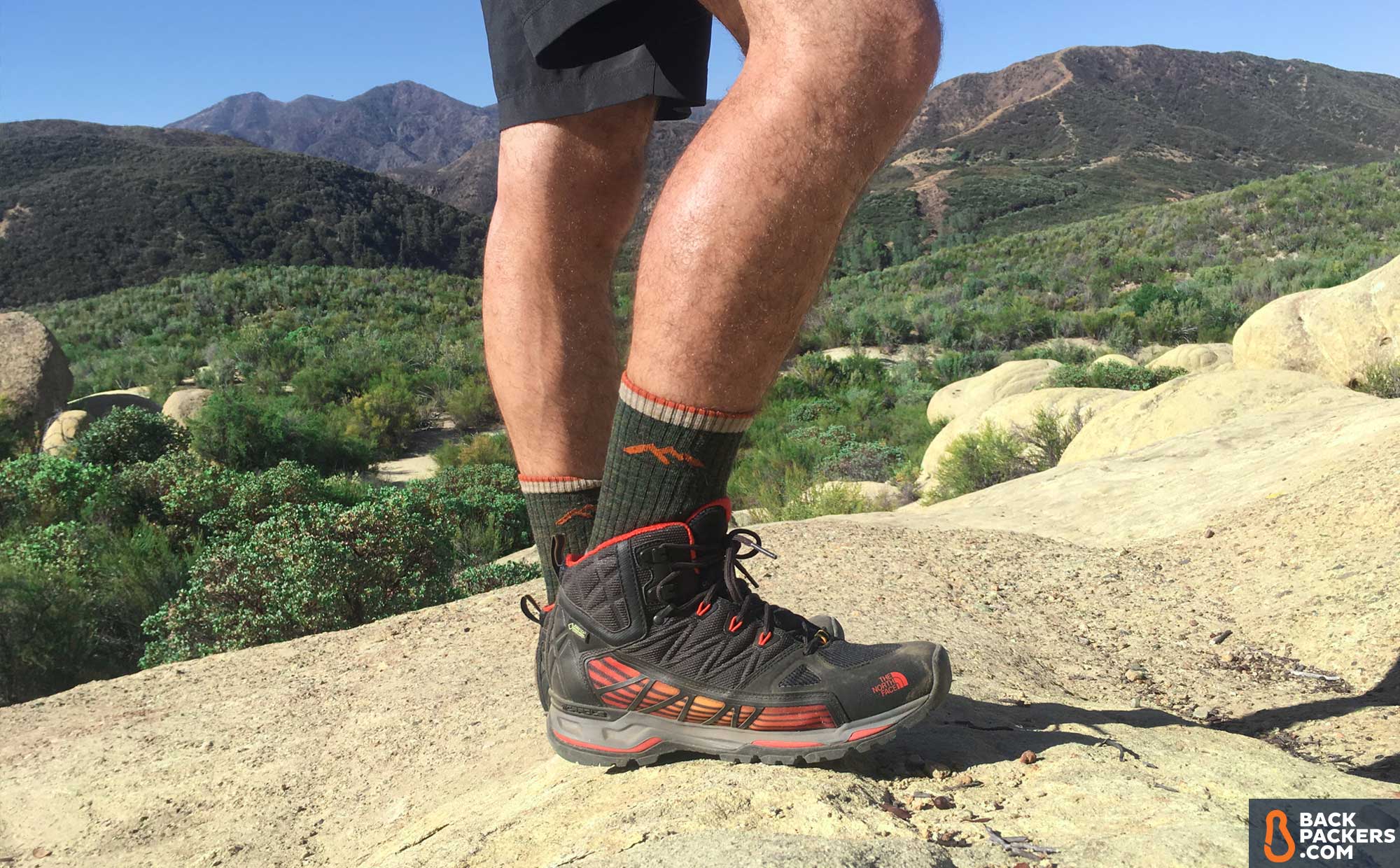
Midweight hiking boots are between 18-22 ounces (per boot), and are probably the boots you imagine when fantasizing about hitting the trail. They usually have Nubuck leather uppers mixed with nylon, solid rubber soles, and take a hike or two to break in. They are durable, long-lasting, and best for anyone who wants that classic support when backpacking or camping.
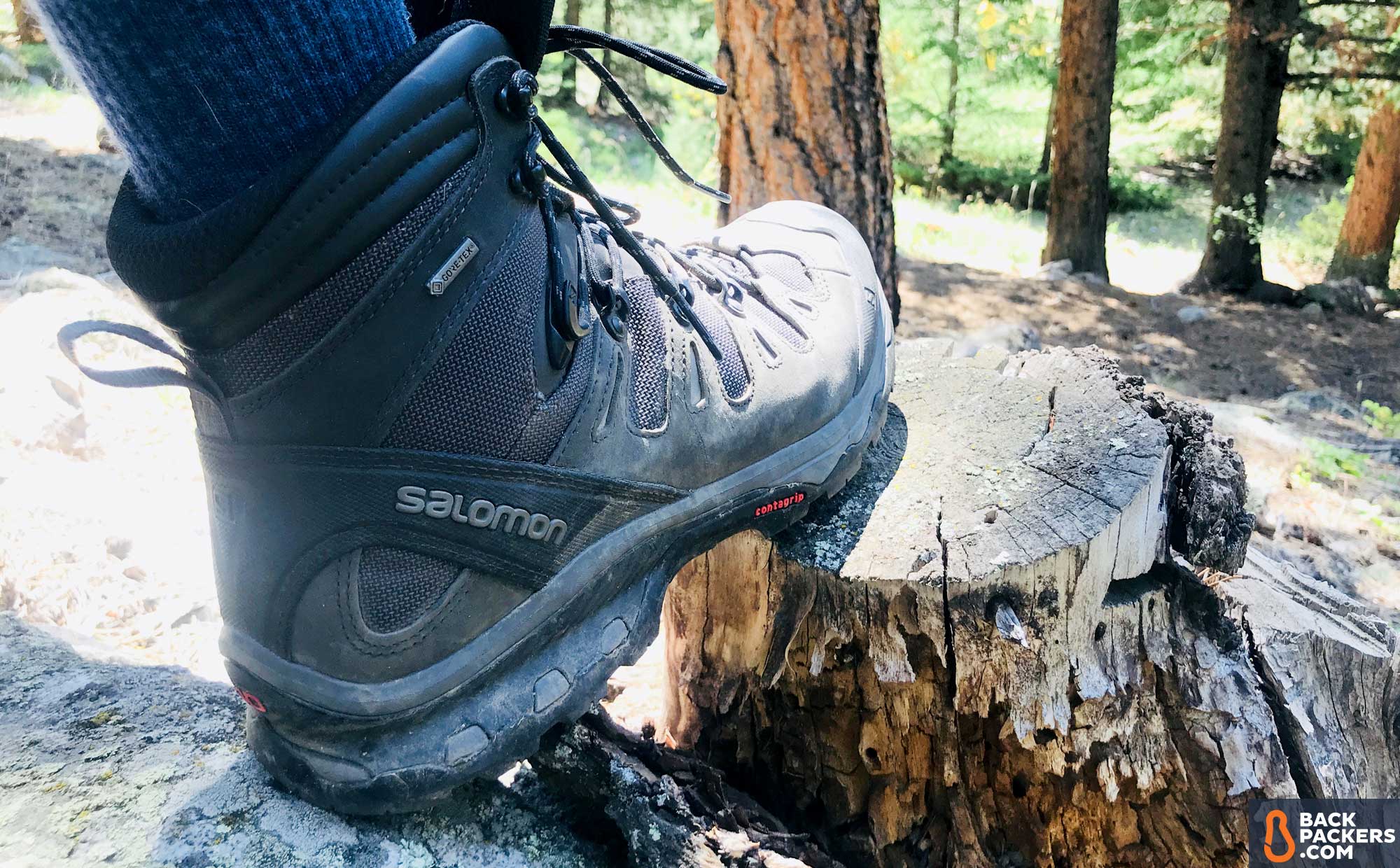
Heavyweight hiking boots are above 22 ounces (per boot) and quite rugged. These boots use thick leather, heavy rubber, and have a beefy outline to fend off all manner of rock and snow. Typically meant for intense environments, and bordering on mountaineering boots, heavyweight hiking boots take a while to break in and can last 20+ years if treated well. Best for those who will put them through the wringer, or only want to buy one solid pair of hiking boots for many years to come.
Waterproofing
Most hiking boots are built to keep things out — dirt, rocks, grass, dust, sand, snow — but most importantly, water. While most of these are annoying if they get in your boot, water can get trapped, soak your socks, and make for an extremely unsavory hike. Because of this, most hiking boots have a waterproof membrane. This is a layer sandwiched between the rugged outer and interior lining of the boot that keeps water from entering.
You'll see this expressed in the product name, like GTX, Waterproof, and WP. This refers to the capability, but not the type of membrane. When you look at boot specs, you'll see the actual membranes — Gore-Tex Performance Comfort, Keen.dry, BDry, Danner Dry, eVent, and NeoShell are a few that are common. In general, these membranes all perform similarly in terms of keeping water out but differ in their breathability.
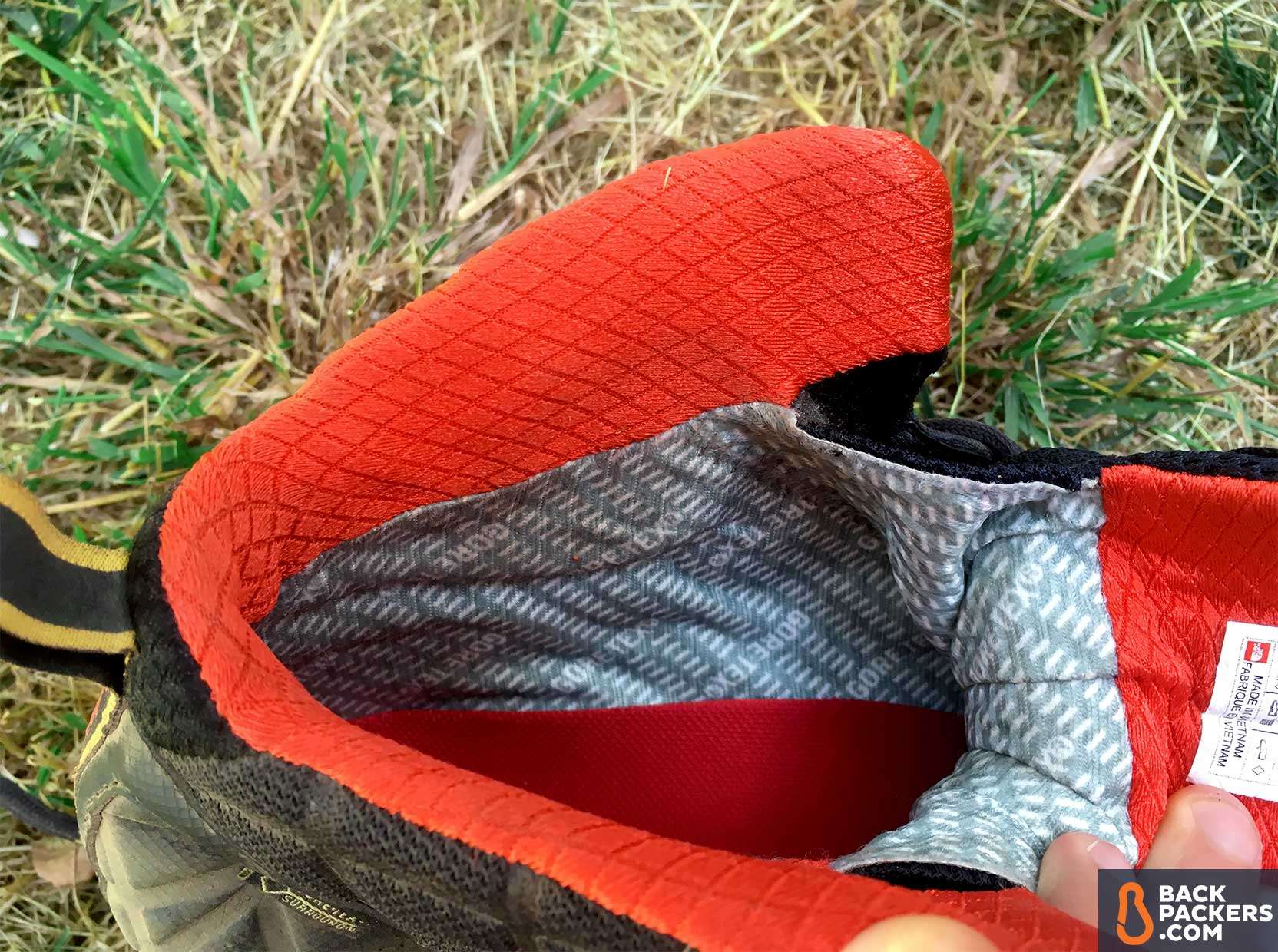
Also, hiking boot uppers are coated with Durable Water Repellent, which adds one final layer of water-beading property. This will wear out over time, and you can reapply.
Do You Need a Waterproof Boot?
Not necessarily. The general mentality for those who want a hiking boot is to be prepared for whatever the trail throws at them, which includes water. But if you know you like to hike in summer, or in always-dry climates like deserts, a hiking boot without waterproofing may be the best option. Manufacturers usually make a “mesh” version of a waterproof boot, so look for those. They will be much better for breathability.
Tip: The only way water can get into a waterproof boot is through the top of the ankle, so be careful not to submerge your whole calf when fording a river.
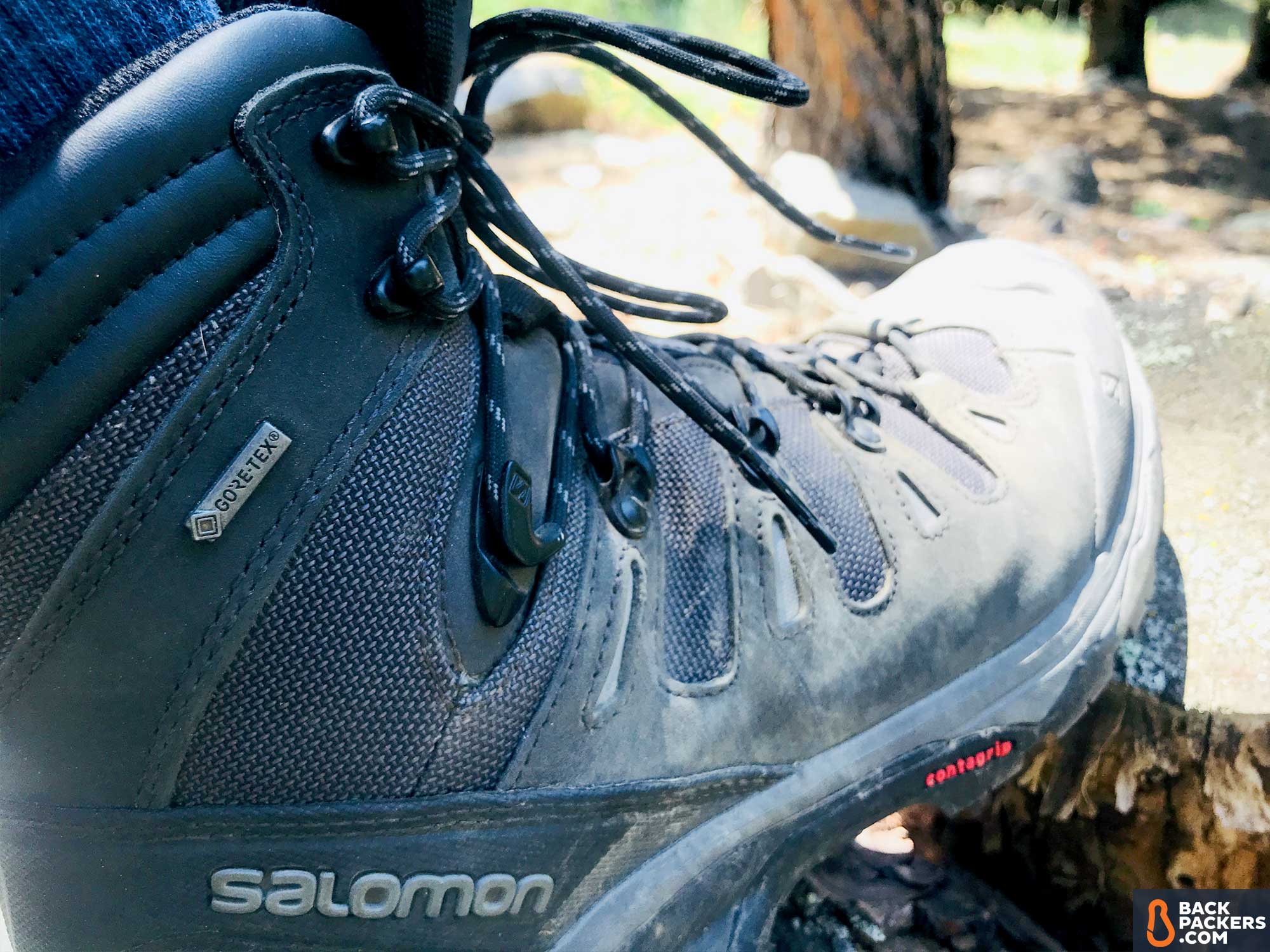
Breathability
The issue with hiking boots, and the main reason folks have started to use trail runners instead, is breathability. Heavy fabrics and waterproof membranes typically suck when it comes to letting your feet breathe. This means if your feet sweat (and they will), it's hard for that sweat to escape, thereby soaking your socks from the inside.
This is very dependent on the person, the climate they hike in, and what kind of footwear they enjoy. As a good rule of thumb, you can expect lightweight hiking boots to be the most breathable, then midweight, then heavyweight, with heavyweight hiking boots typically being pretty poor breathers (but excellent protectors).
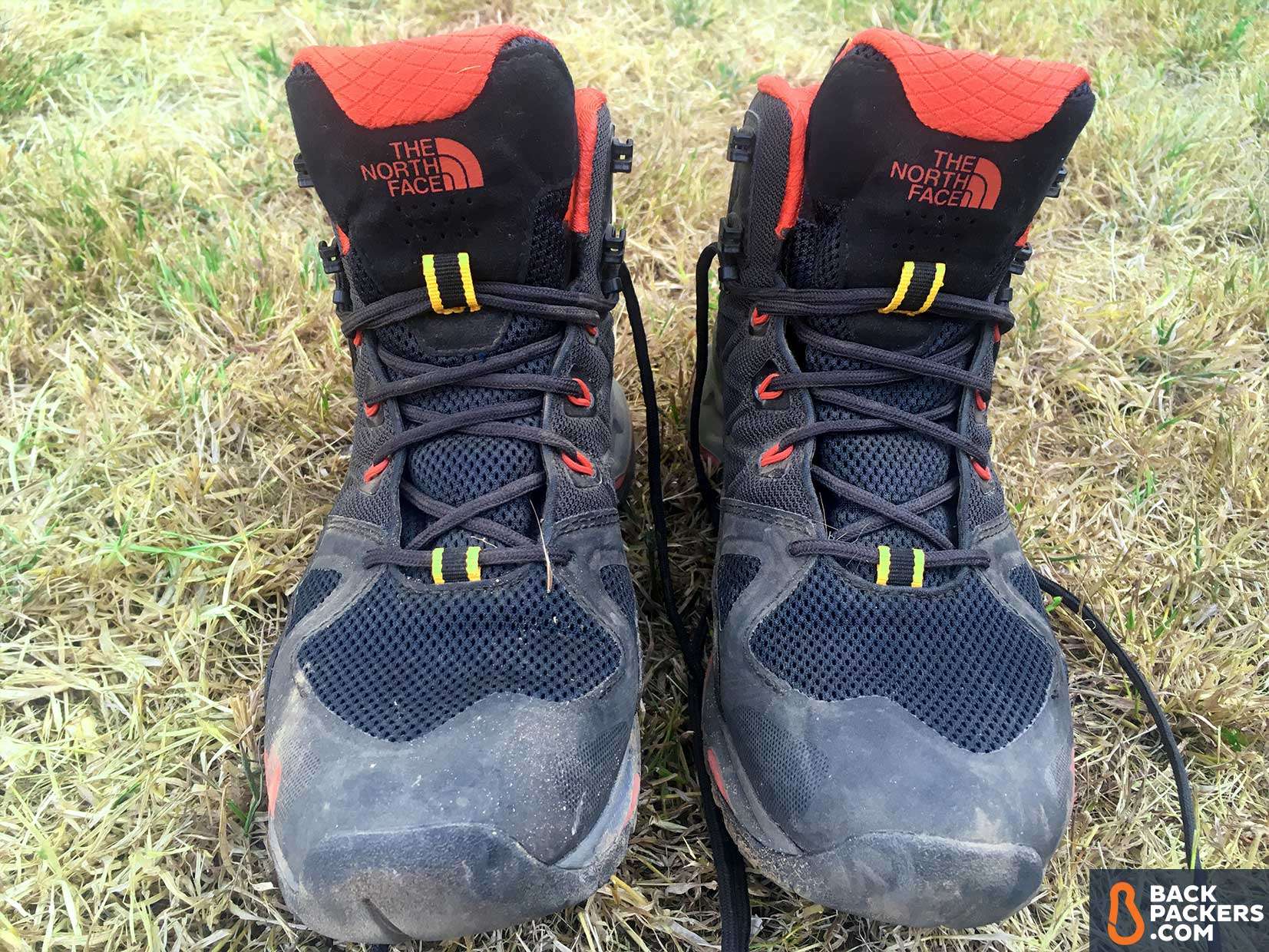
If you want the support of a hiking boot but near the breathability of a trail runner, look for lightweight hiking boots without a waterproof coating.
Uppers
Hiking boot uppers are made either with leather, synthetic nylon, and/or some form of mesh. Most of the hiking boots in this list use a combination of the three to provide durability, flex, comfort, and breathability. A shoe with more mesh will be more breathable but less durable, while a full leather shoe will be very durable but not very breathable. It's always a trade-off.
There are a few hiking boots in this list that don't use any leather (vegan boots!), and those companies have done their best to match the durability of leather with synthetic materials. However, most boots still use leather, and usually Nubuck leather, which is brushed and nice to the touch.
A couple of the heaviest boots on this list use full-grain leather, which is shiny, incredibly durable, and weather resistant, and made from one single piece of leather.
Outsoles and Traction
Beyond protection, the biggest reason to get hiking boots instead of hiking shoes or trail runners is traction. Outsoles on hiking boots are the most durable, rugged, and grippy of all shoes on the market (discounting climbing or approach shoes). This varies by brand and individual shoe, but if you're hiking in tough environments with a fair amount of scrambling and rocky surfaces, you'll want sure footing.
Vibram is the most common outsole on hiking boots. Each brand has a different model of Vibram, though, and even specific boots within a brand can have different lug patterns and thicknesses. Generally, thicker lugs will do better in tougher environments. As you look at boot prices, you'll notice more expensive boots have burlier outsoles with fancier rubber.
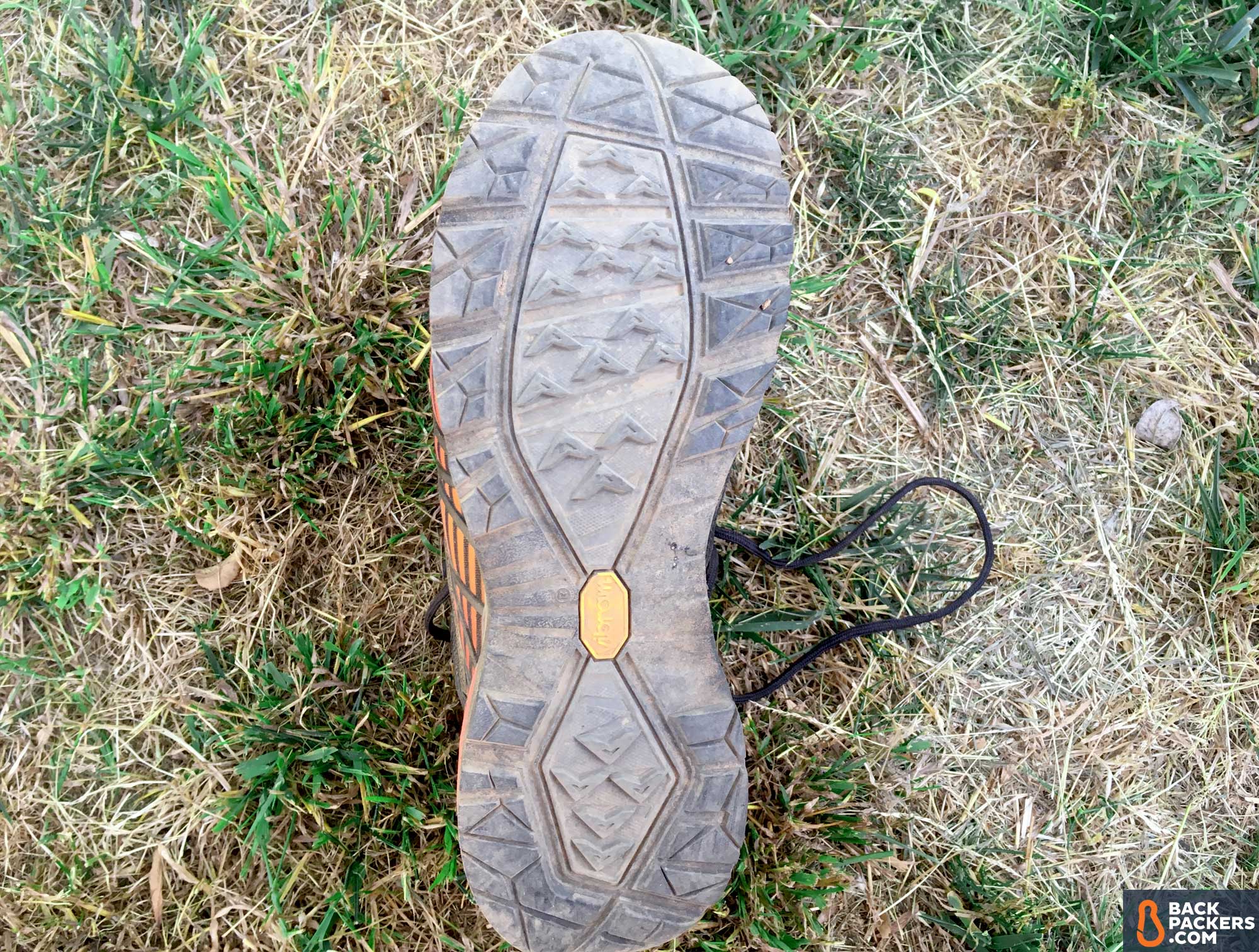
Some brands, like Oboz and Salomon, create their own outsole in addition to the rest of the shoe. This creates a bit more unity between shoe and sole, but for the most part, Vibram and brand-specific patterns are equal, depending on the actual model. You'll want to look for outsoles that have a record of excellence, like Salomon's Contragrip, La Sportiva's Vibram soles plus its Impact Brake System for steep hills, or Lowa's Vibram EVO used on the Renegade series.
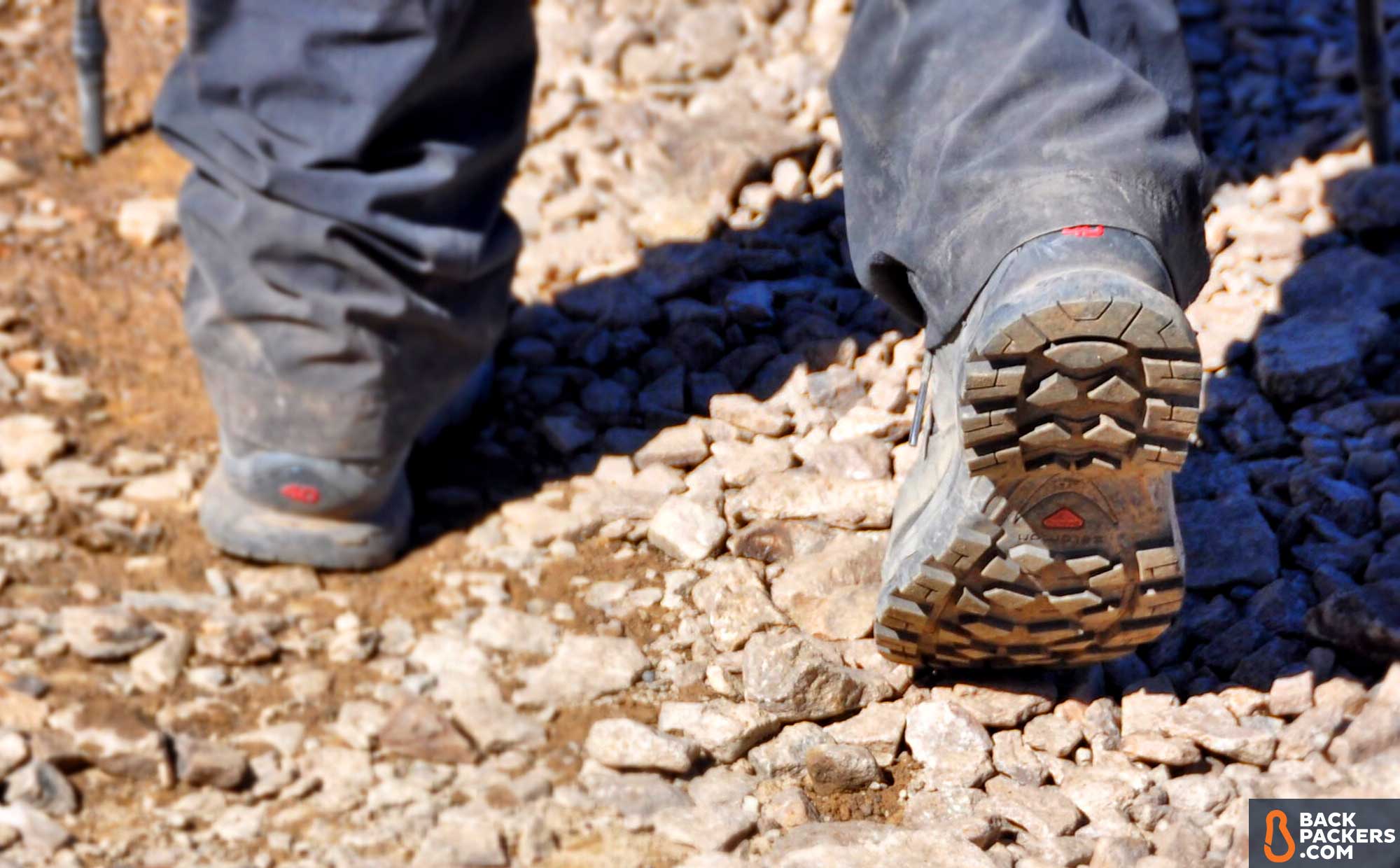
Ankle Support
Another main feature of hiking boots is ankle support. This is the main difference between hiking boots and hiking shoes — boots have ankle support, hiking shoes don't. Despite all the hiking boots on this list having ankle support, some reach higher up the leg than others, and some are simply more comfortable and secure than others.
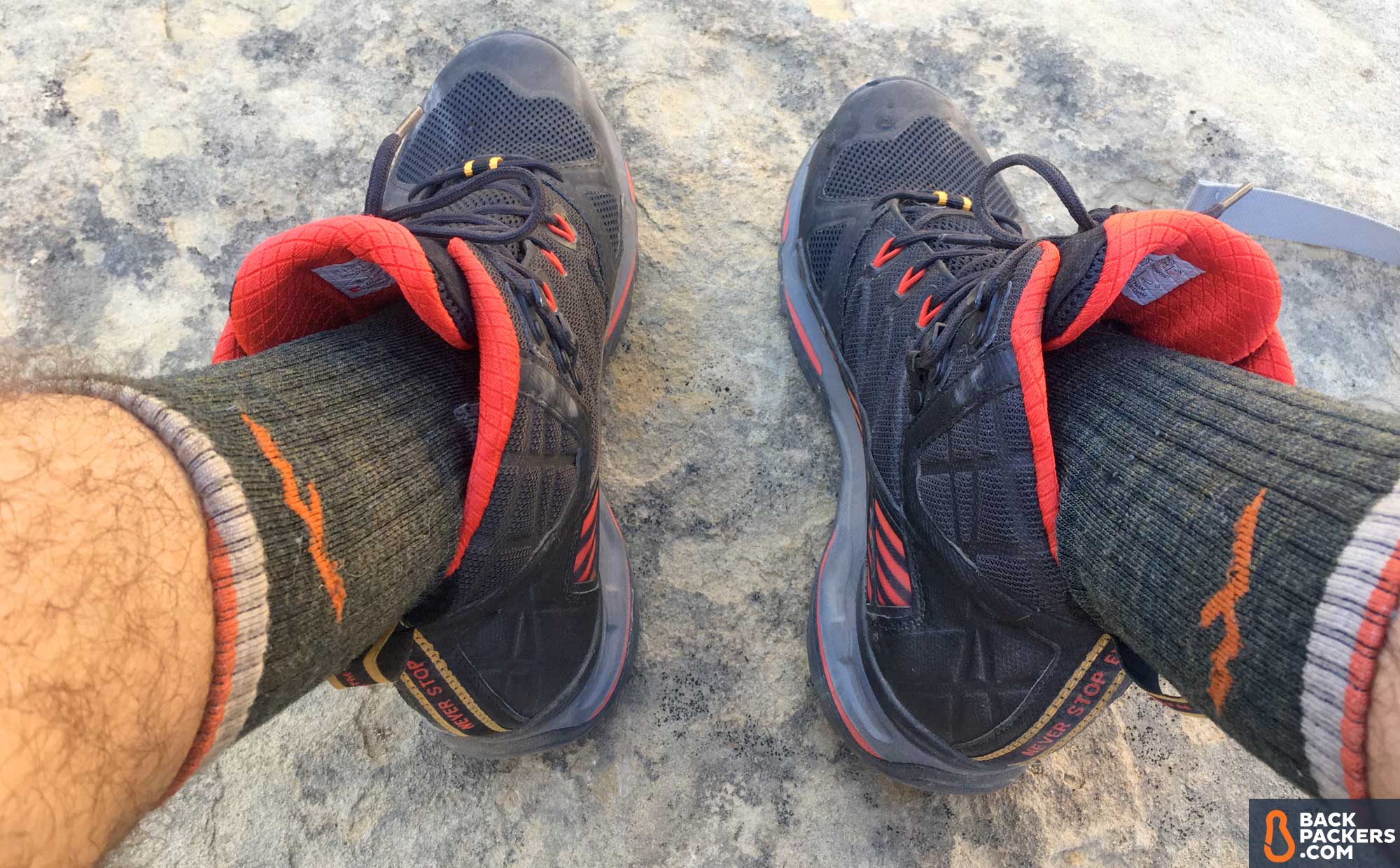
Ankle support is the main reason you're buying a boot instead of a hiking shoe or trail runner. These boots are a “mid”, which goes up an inch or two onto the ankle. This is decent, but not extreme ankle protection. These boots could be tied tightly around the ankle for a firmer feel.
Remember that hiking boots take some time to break in, and you'll feel this most noticeably in the ankle. This part of the boot will be stiff and rub against your leg until it learns your movements.
Toe Protection
The final element of hiking boots that stands out is toe protection. Almost all hiking boots (and all in this list) have some form of rubber toe bumper. This ensures you won't rip open your shoe on some rocks, and helps keep water out when walking across small puddles.
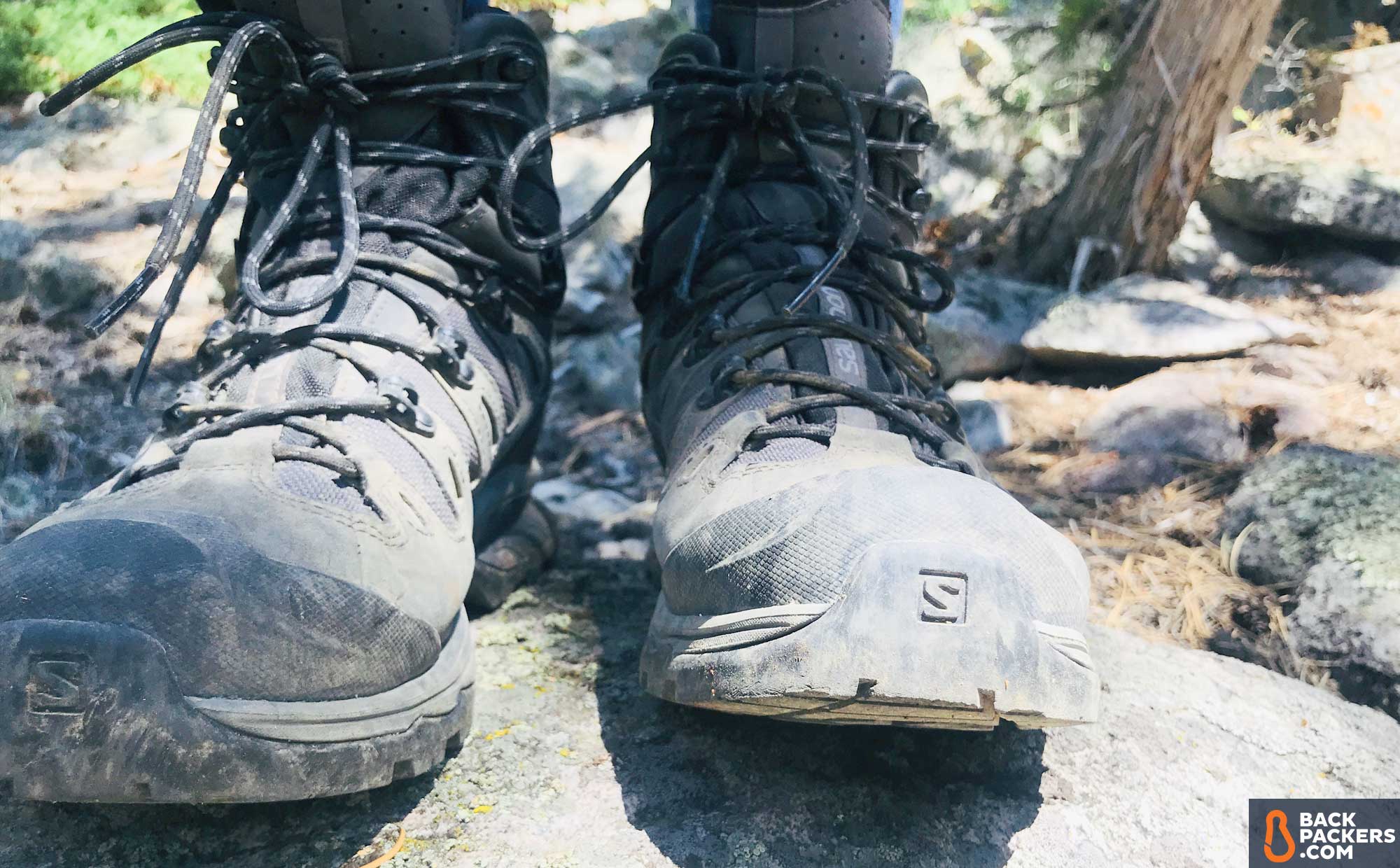
Many lightweight hiking boots have less serious toe protection, whereas heavyweight boots have huge toe bumpers that basically cannot be penetrated.
How to Buy Hiking Boots
Knowing all the details of a hiking boot is important when considering what you actually want to buy. The best piece of advice we can give: try them on. Hiking boots (and all shoes) are incredibly subjective to the user. Our list of the best hiking boots is a great starting point, but we do recommend trying on individual models and brands in store.
Comfort and Fit
The comfort and fit of a hiking boot depend entirely on the person wearing it. If you have narrow feet, look for a narrow-foot brand, like Salomon; wide-footed folks should look at Keen as a starting point. Typically once you find a brand that fits your foot, you can hone in on a model that has the exact features you want.
Doing this fitting in a store is best. Ask the shoe rep to measure you with a Brannock device, which has standard width and length measurements, and will give you a fairly universal idea of what types of brands will work.
There are a few things to note once you find a shoe that feels comfortable:
- Your toes should not touch the front of the boot, and if you slide your feet forward, you should be able to put a finger (index, unless you have sausage fingers!) into the space by the heel.
- Try on the boots with the actual socks you plan to wear. Sock thickness makes a large difference in fit.
- Likewise, if you plan to wear insoles, do it when trying on the boot.
- If you're in the middle of two sizes, go with the bigger size. Feet swell after long days on the trail, and you'll be better off in a slightly bigger boot because you can always wear more socks or tie them tighter.
Insoles
A specific note on insoles: they may be right for you. It used to be that hiking boots came with premium insoles and didn't need specialty ones — these days, the insoles of most hiking footwear are just alright. (Except for Oboz, they include excellent insoles with every shoe!)
This, and the fact that certain people need certain types of support, has led to the insole industry. In the outdoor market, Superfeet and SOLES are two of the most popular. Try these on if you've always had discomfort with footwear — they can do wonders.
Online Retailers vs Real Stores
While we love online retailers for convenience and gear deals, footwear is one of those things you should probably try in person. You might be comfortable buying and returning multiple pairs of shoes or sizes online (let's not kid ourselves, everyone does this), and that could also work for hiking boots.
That said, there's nothing like going into a store and trying on multiple brands in multiple sizes on the spot to see if you get the right fit.
If you know your brand, last, and size, by all means, order online.
Used Hiking Boots vs New Hiking Boots
A lot of outdoor gear can be bought used. While that's technically true for hiking boots, we recommend ensuring the level of “used” before purchasing. Part of what makes all that leather in hiking boots so excellent is that after many uses, it becomes custom-fitted to your foot.
If you buy a heavily used boot, it will be custom-fitted to someone else's foot.
That said, if you happen upon a very lightly used pair of hiking boots in your size and brand, go for it. Boots are expensive, and this can cut down on cost quite a bit!
Hiking Boots vs Hiking Shoes vs Trail Running Shoes
We've mentioned a few differences between hiking boots and these other categories of footwear throughout this article. Hiking boots were once the only option for wild-hungry backpackers, but we're in a new age. While hiking boots are heavy, durable, have full ankle support, excellent traction, tons of protection, and waterproofing, they may not be the best option for you.
Hiking shoes are hugely popular today because they are lighter, cheaper, and less cumbersome than boots, but still offer much of the protection and waterproofing. You'll often see hiking shoes and boots with the same model name, and the only difference is the height of the ankle. Many of the boots in this list are sold as hiking shoes as well. You can also get hiking shoes that have more mesh, are lighter weight, and have many more non-waterproof options.
Trail running shoes were designed for marathon runners, but have made their way into the backpacking and hiking world. These shoes are very popular right now, especially among those who want a super lightweight, relatively cheap option. They only last 400-800 miles, though, so expect to buy multiple pairs over the years.
Backpackers.com Affiliate Policy: This guide contains affiliate links, which help fund our website. When you click on the links to purchase the gear, we get a commission, and this goes a long way to creating guides, gear reviews, and other excellent content.
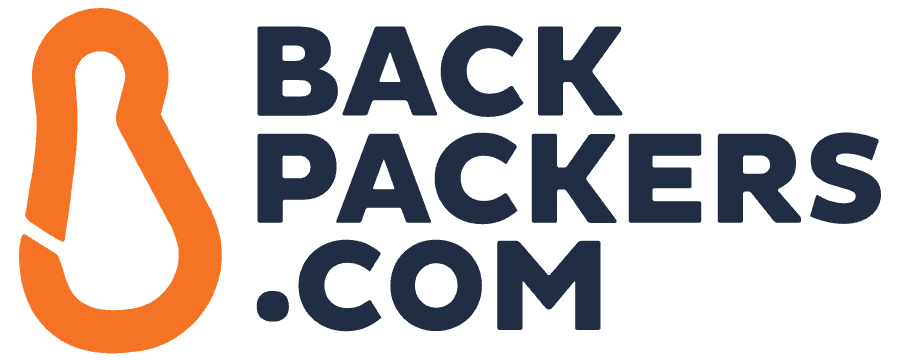
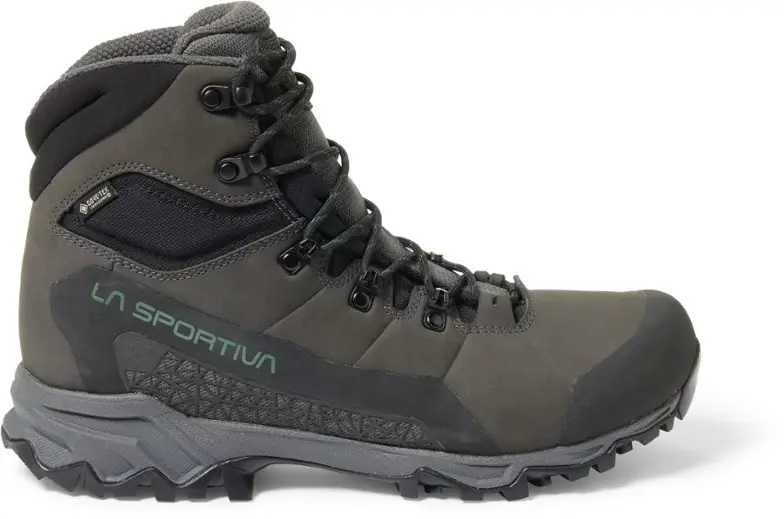
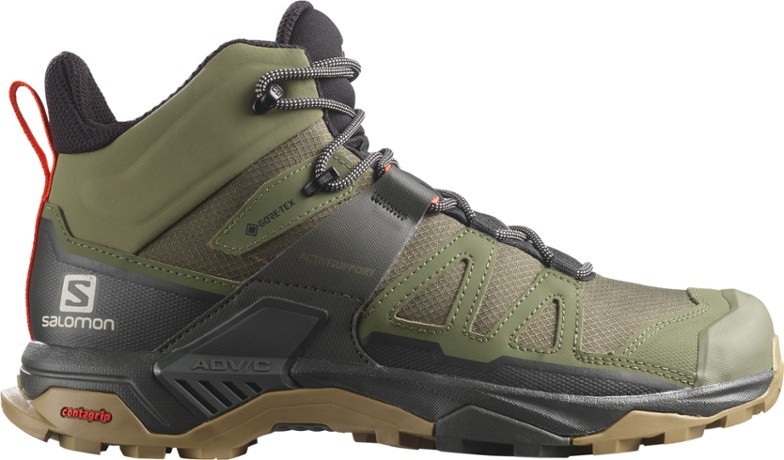
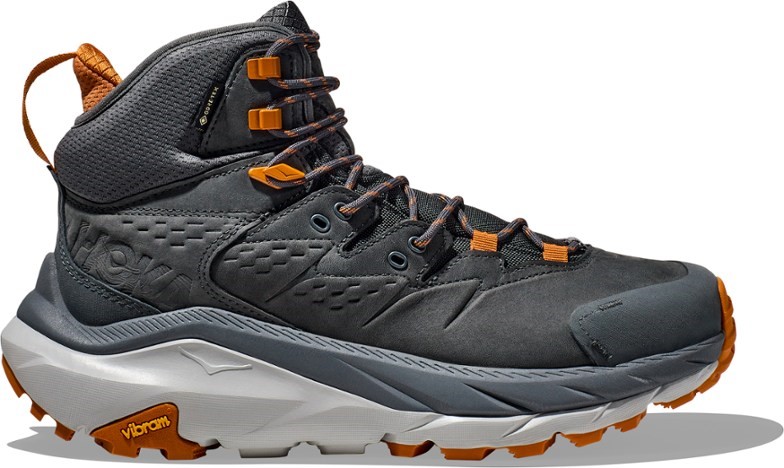
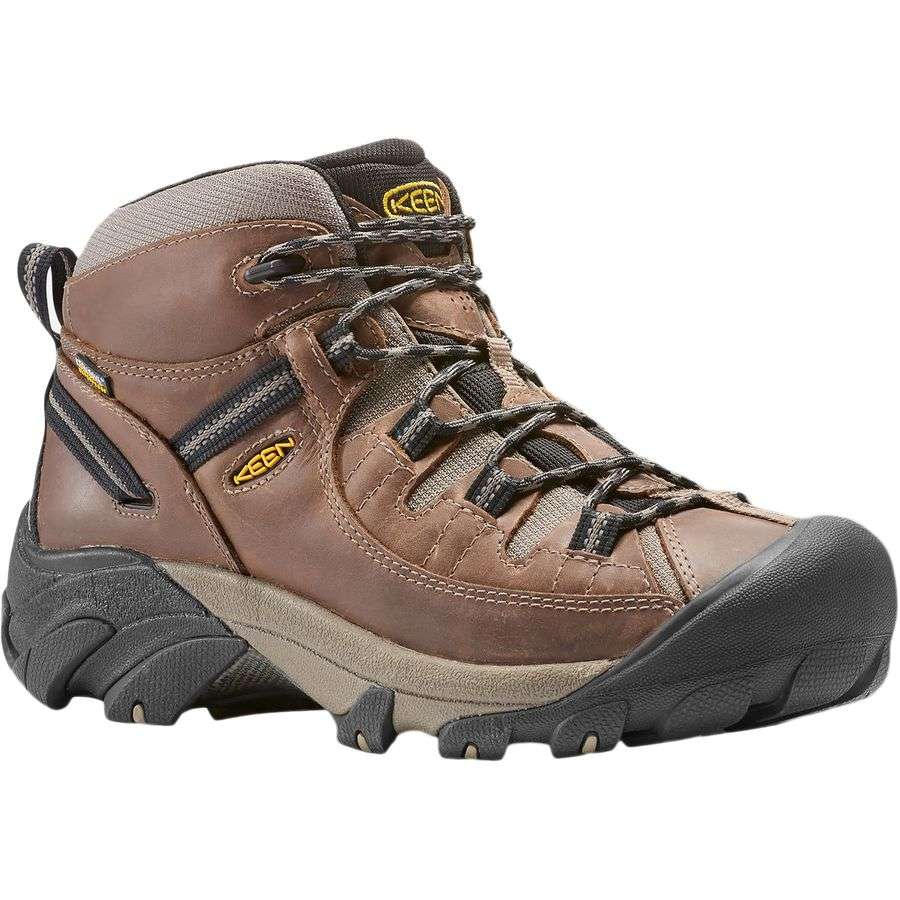
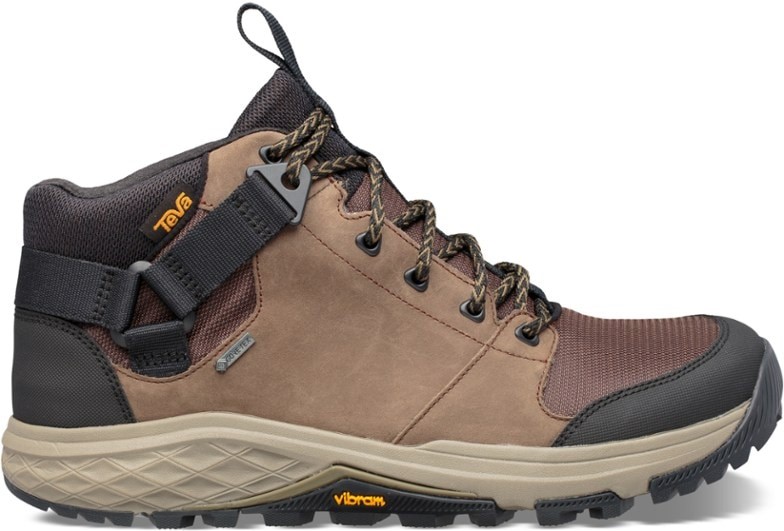
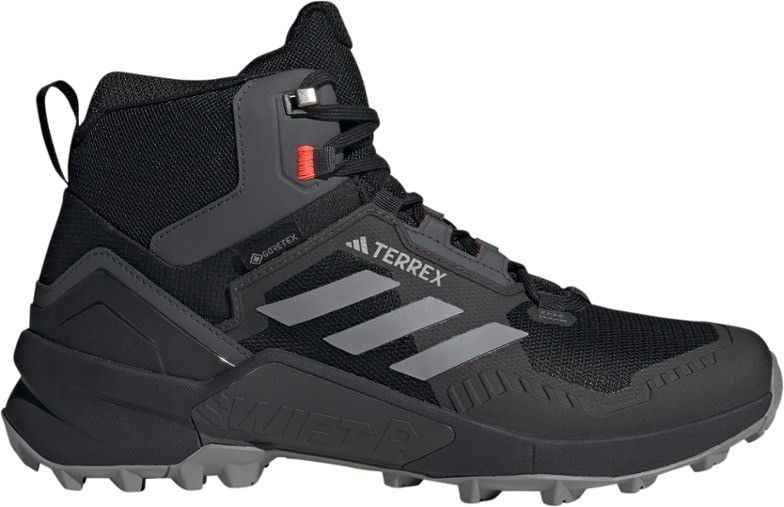
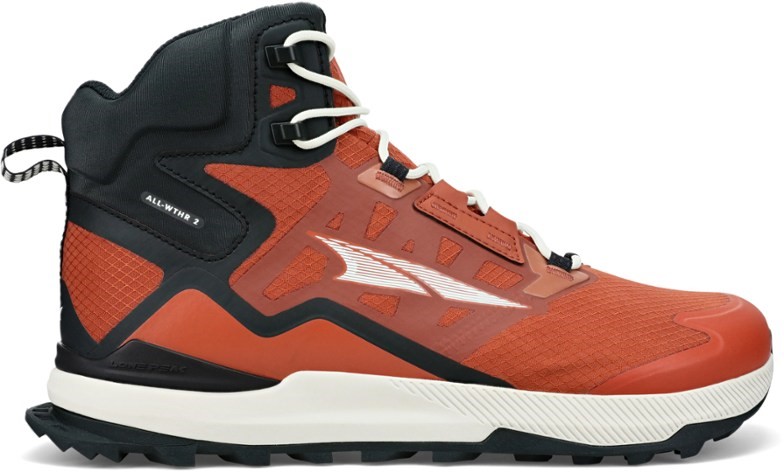
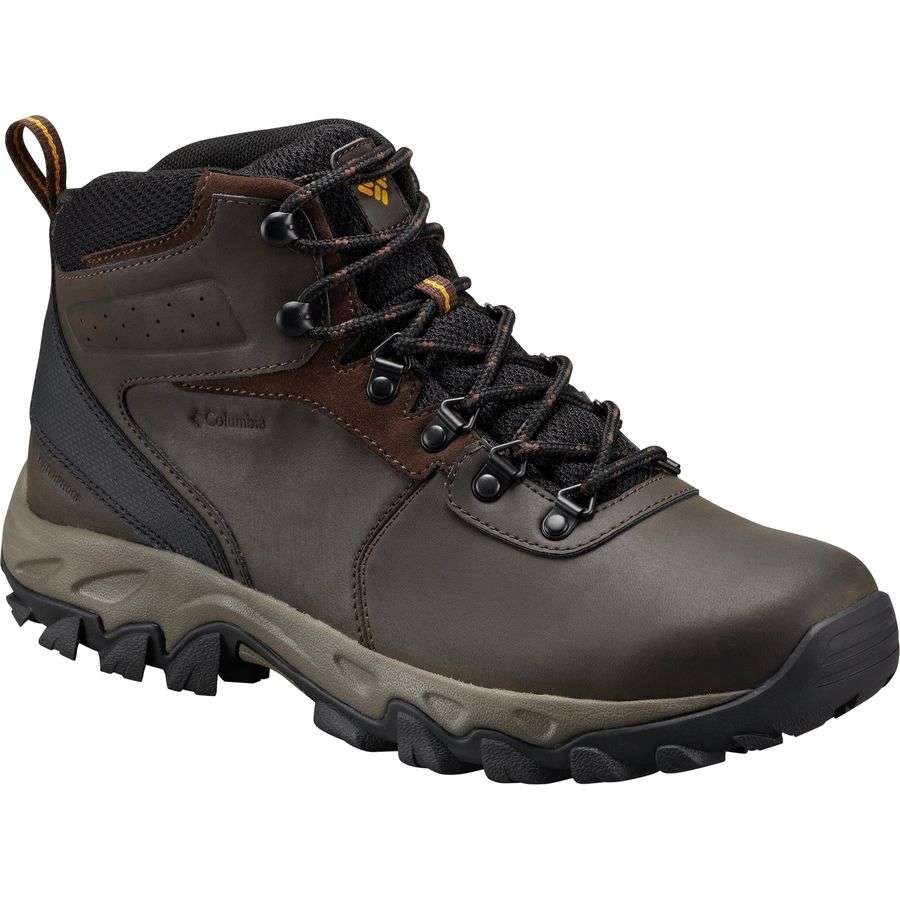
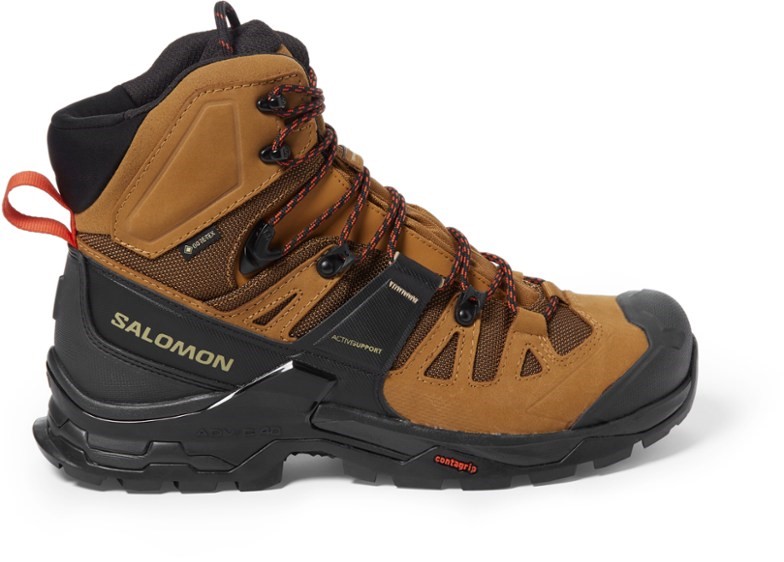
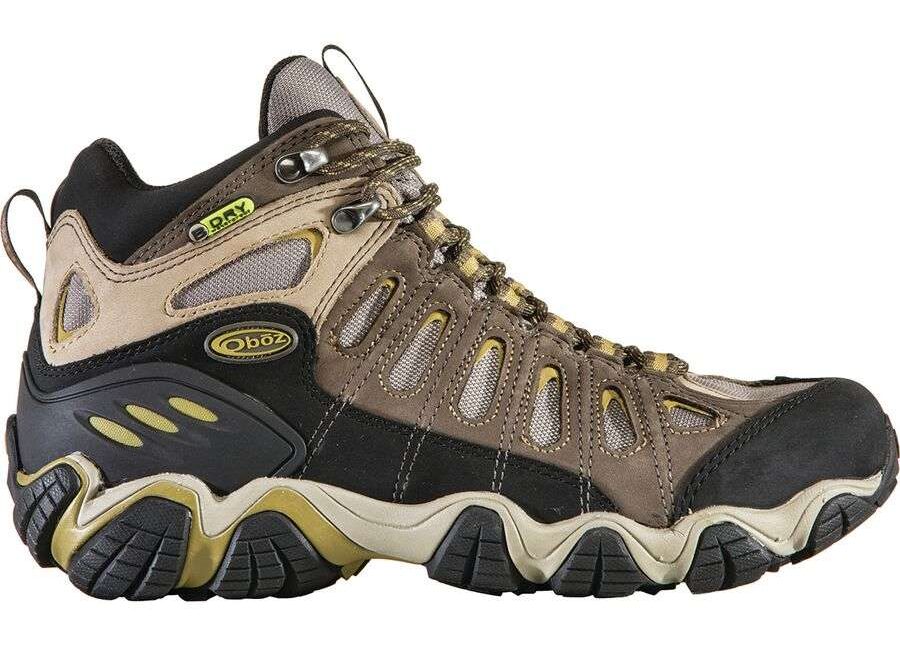
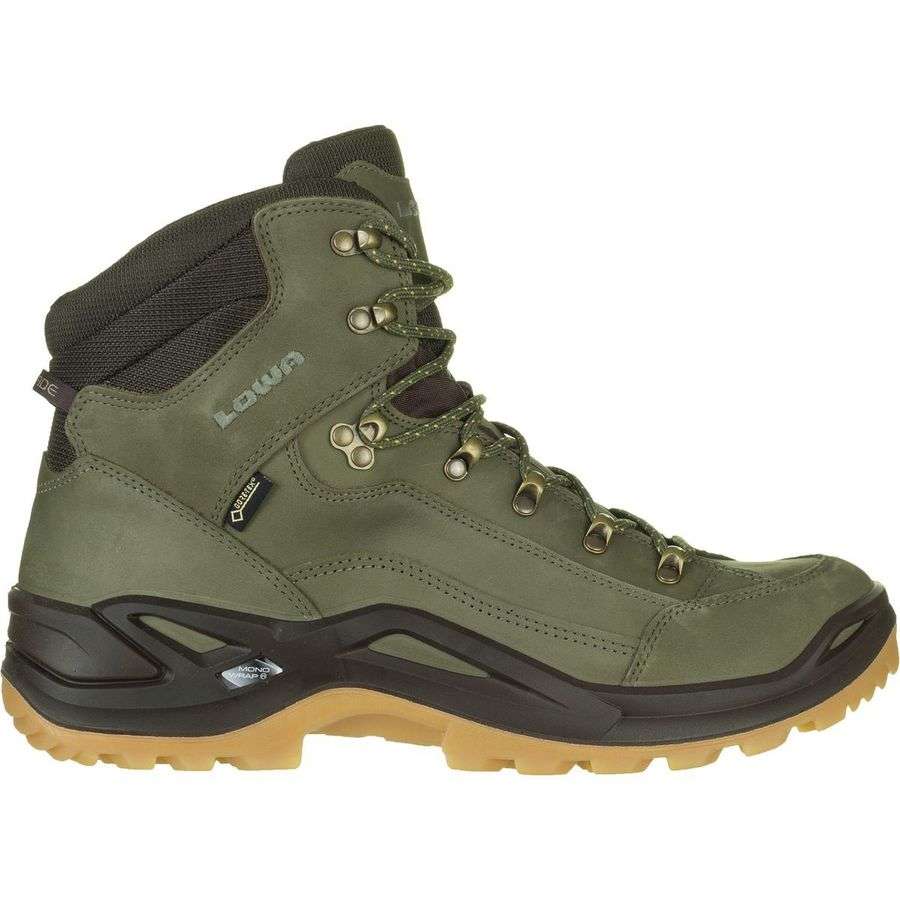
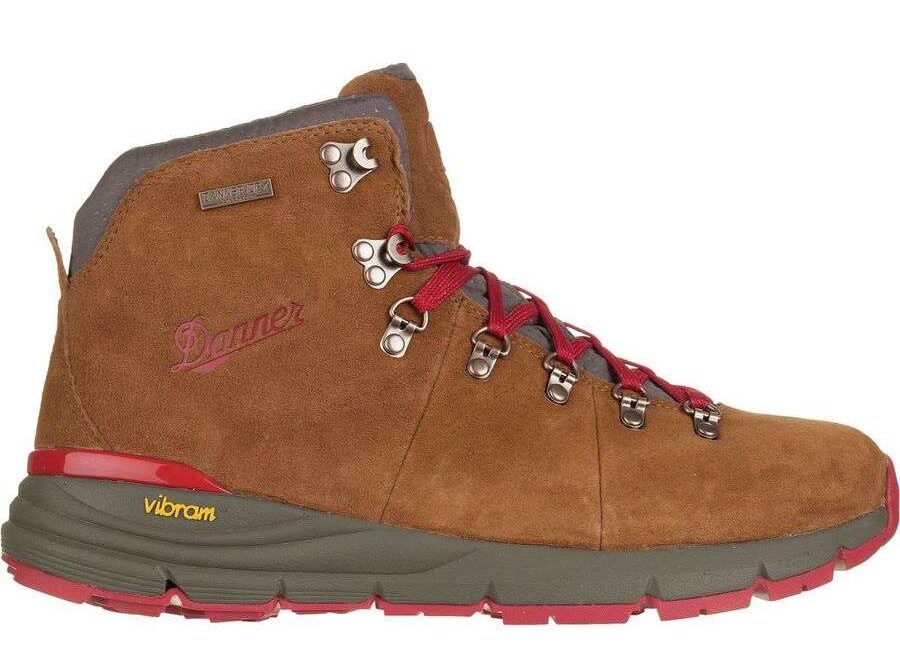
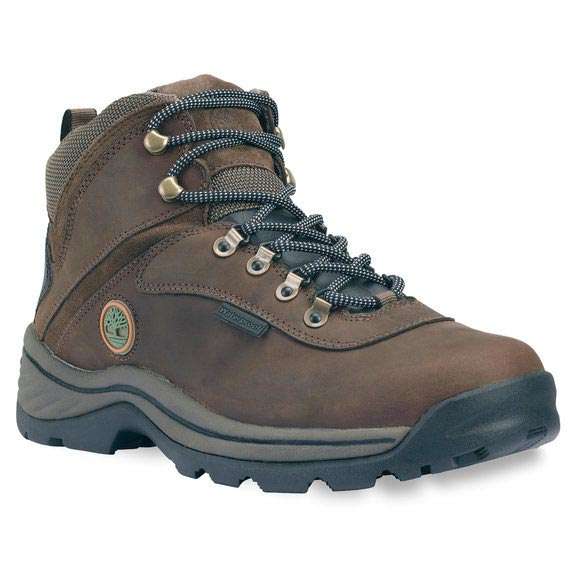
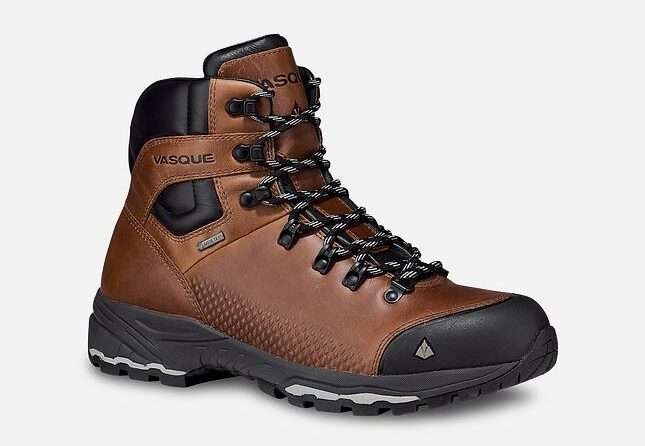
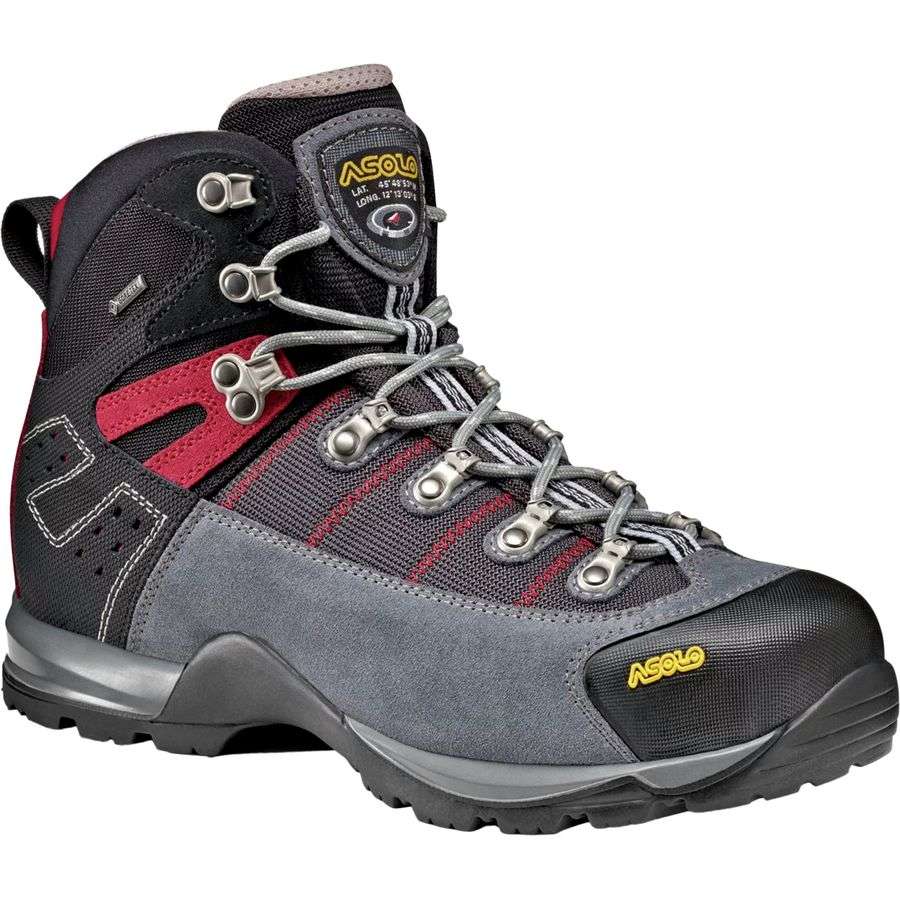
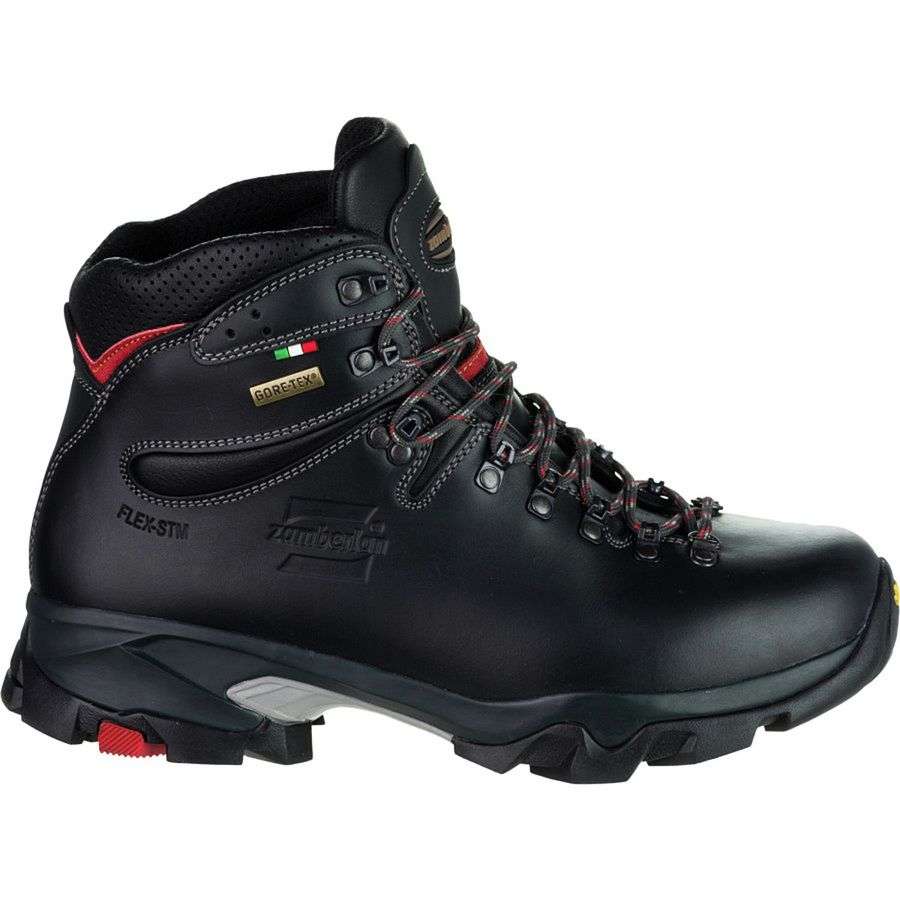

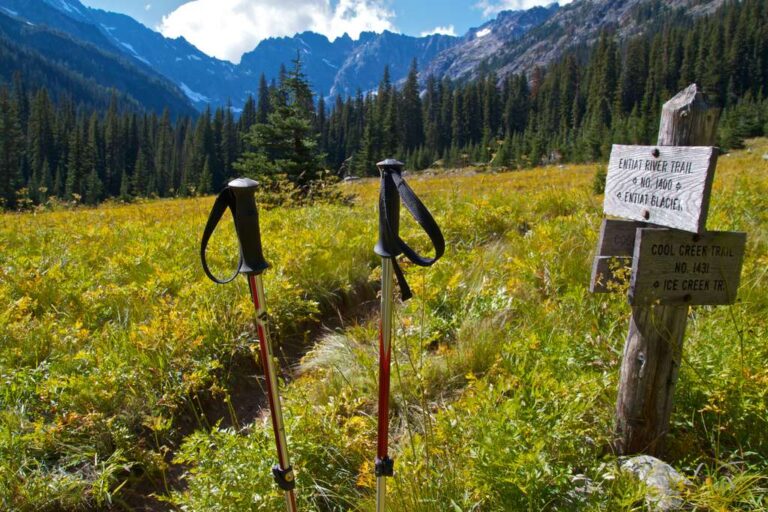
![Jill and RT on Thru-Hiking the Pacific Crest Trail [interview] 29 thru-hiking the pacific crest trail jill and rt day final day](https://backpackers.com/wp-content/uploads/2016/01/thru-hiking-the-pacific-crest-trail-jill-and-rt-final-day-20250527-070726-768x576.jpg)
